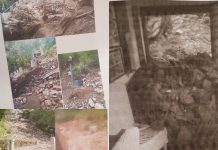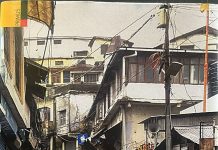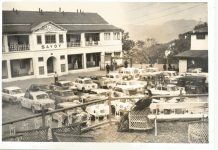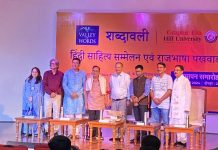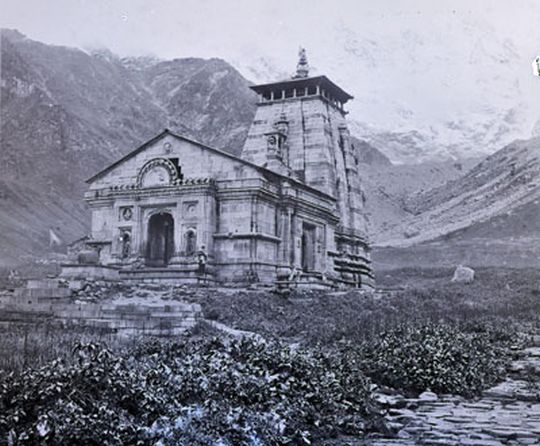Of recent there has been a noisy clamour involving the reconstruction work underway in Kedarnath. Over the last few months, in awe I have watched the struggle to accomplish this Herculean task. It involved a couple of hundred people who soldiered on through the winter chill – the sleet, snow and wind – to slowly piece it all together. Thus far, I have been content to take a back seat but I guess it is now opportune to chip in. Amid the din, I peer through the other end of the telescope. ‘When in doubt,’ My teachers always taught me, ‘Go back to the beginning.’
And true to form, I have gone back in time to the earliest known pictures of the Kedarnath Temple. If you consider the fact that photography came to India around 1840 & by 1847 William Armstrong Fallon published his survey of Ajanta and Elora caves; elsewhere, the Italian Felico Beato took highly suspect pictures of the Sikandar Bagh Palace, Lucknow showing remains of the rebels in the foreground in 1858 and Samuel Bourne has left us his images of the hill station of Mussoorie taken on 3rd July 1866. It was his third tour of the Himalaya.
One can safely assume that the earliest pictures of Kedarnath date back to the 1860s or approximately a 160 years ago. All you had was the grandeur of the Kedarnath temple nestled prominently at the bottom of the moraine of the Chorabari Lake. It is evocative and wistful. One is tempted to fondly wish back all change that has taken place. Lord Shiva’s magnificent shrine, set against the mountain’s backdrop, stands in its pristine glory amid a field of anemones. Look as much as you will, but you will not find another shrine, store or shack. Later on, the very community that benefitted from religious tourism started the clutter. Nothing wrong with that except, trouble is that they did not know where to stop. Economics won. Aesthetics went out of the window. One more shanty town was born.
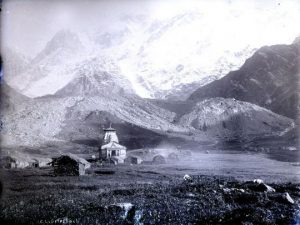
In the once upon a time days, I too have walked around the old courtyard. It was so small that you could have easily dismissed it as non-existent. It was not meant to contend with the pressure of 25,000 pilgrims on opening day alone, like one saw this year. Obviously, much more open space is needed and perhaps, the clearing in front is justified for this, and this reason alone.
In our times, religious tourism has meshed itself so finely with pilgrimages that the Char-diwari has, at best, been rendered redundant. It serves no purpose. A gentle slope is more than adequate to drain rain water. Remember that it was lake burst that triggered off devastation and that lake is gone. All that remains are bitter memories and rubble of that dark night.
Obviously, the smaller shrines and structures that were swept away in the swirling flood waters came up much later. They are no more than add on’s and were never-ever a part of the original temple town. To argue to the contrary is a sticky proposition, unsupported by proof like these old sepia-tone images.
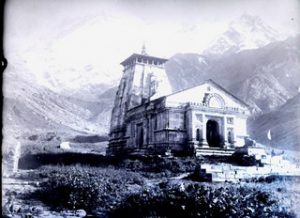
Some still see the 2013 deluge, as the ultimate demolition drive. It wiped out all that was extraneous, while leaving the shrine alone. Lamentably, this came at the steep cost of lives and property. Let us, as Uttarakhandis not let ourselves be deluded into believing that ‘we-know-it-all’. We must learn anew to look beyond temporal greed. We have to see the writing on the wall. Let us not try to turn back the clock as it were and go back to the free-for-all of laissez-faire. It is time to move on. There is no point in symbolic token protest fasts every Monday (announced by the Kedar Sabha). Intermediate fasting is an excellent idea to stay in good health, but in this instance, it is patently ill timed. Considering especially the fact that this is happening at a time when pilgrims are getting over their Doomsday fright and finally flocking to the shrine once again. This half-baked idea of protest should be junked and thrown into the dustbin. It smacks of arrogance when seen in the context of the larger good of all the people of India.











